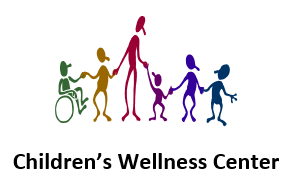Every parent knows that having a baby changes just about every aspect of life, and this is true for traveling, too. Having a baby transforms all kinds of transportation logistics, from quick trips to the grocery store to cross-country vacations. Whether you travel by plane, train, bus, or automobile, traveling with a baby can be complicated. To go from one place to another with a baby in tow, you’ll need to plan carefully and prepare to ensure a safe, comfortable, and smooth trip.
Packing the Essentials and Planning Ahead
Babies need a lot of stuff, equipment, and gear. When you’re leaving home for any amount of time, you’ll need to pack your baby’s bag with all of the essentials plus a few extra items, including:
- Diapers and wipes
- Extra clothes
- Feeding supplies
- Comfort items and toys
- Portable play mat
- Portable white-noise machine
- Medications and first-aid kit
Bring enough of these items that you will have the amount you would expect to use on a regular day in addition to extras to last in case of delays or unexpected issues.
Additionally, check the weather report for your destination and pack appropriate items, such as sunscreen and a hat or a snowsuit and warm blanket to cover your baby’s car seat.
Take the Path of Least Resistance
Of course, it is not always possible, but traveling will be much easier when you can work it into your baby’s schedule instead of trying to travel on a schedule that goes against your baby’s usual routine.
Depending on the length of your journey, timing travel during your baby’s naptime will make the process easier because they will be able to sleep in their car seat or carrier during the trip.
On longer trips, do your best to encourage your baby to maintain their usual routine. Help them nap during usual nap times, eat at their usual mealtimes, and play when they would normally be awake and alert.
The Two-Hour Rule
If you are traveling by car or with your baby in a car seat, you must know the two-hour rule. Most car seat manufacturers recommend that babies should not spend more than two hours in a car seat within a 24-hour period. The risks of more time in a car seat include straining the baby’s developing spine and restricted airflow.
To ensure your baby’s safety if you must drive more than two hours per day:
- Take long breaks with your baby out of the car seat every couple of hours while driving.
- Use a well-fitted, age and size-appropriate car seat.
- Use an infant insert when needed.
- Have an adult sit next to the infant at all times.
- Help your baby regulate their temperature while fitted snugly in the car seat.
- Be mindful of their neck position.
- Only use the car seat when traveling in the car. (Don’t let a baby continue napping in a car seat or keep the baby in the car seat attached to a stroller.)
Traveling by Car, Plane, and Public Transportation
Depending on how you plan to travel, you will need to prepare differently to ensure your infant’s safety, comfort, and happiness.
Road Trips in the Car
As stated above, use a safe, appropriate car seat and follow the two-hour rule. Plan your trip with plenty of time scheduled for frequent breaks. During the breaks, change your baby’s diaper, put down a playmat for stretching, and give your baby some time on their back to take a break from the seated position.
Using Public Transportation
With public transportation like taxis, trains, buses, or subway systems, there is no guarantee of seatbelts or restraints.
Before using public transportation, parents should do a little research with the city or transportation company to determine rules and accommodations for infant travel. For example, some types of strollers might not be allowed on public transportation, and some public transit providers will have particular safety accommodations for children.
Taking a Flight
Flying with a baby that is less than a week old is not recommended, and ideally, an infant shouldn’t fly at all until they are at least two or three months old. While children under the age of two don’t have to have a plane ticket, the safest way to fly with a baby is with an FAA-approved child restraint system. The two-hour rule applies to babies in car seats on airplanes, too. Some airlines offer bassinets where your baby can spend some time safely extended on their back during long flights.
Arrive at the airport extra early so that you have plenty of time to get through security screening with all of your extra gear like baby bags, strollers, and car seats (Note: TSA deems pouches of formula, milk, and pureed food as medically necessary.). You will want to reach your gate early so that you can be among the first to board the plane. This will allow you to get settled and tucked away without the rush of other passengers trying to get to their seats.
Prepare for Your Baby’s Trip With Professional Travel Safety Recommendations and Advice
At Children’s Wellness Center, we understand that traveling with a baby can be stressful, but we are here to help you prepare and ensure a safe trip for your child. If you have any questions or concerns about traveling with a baby, please contact us.

